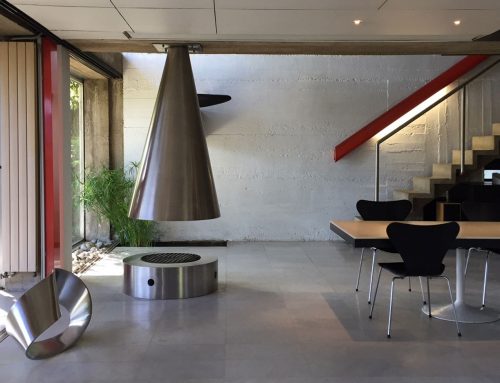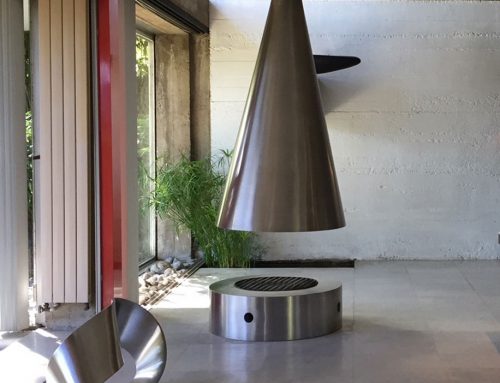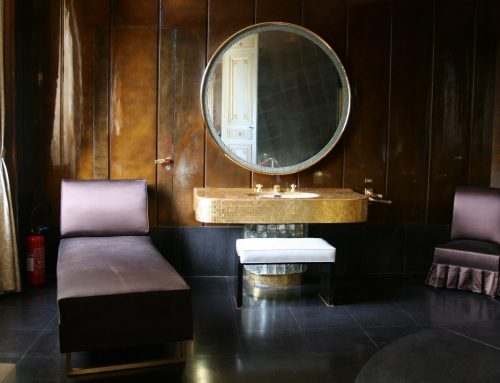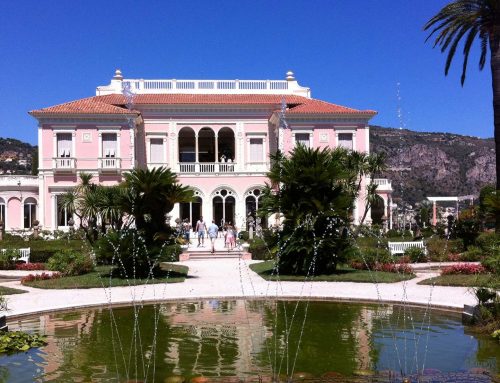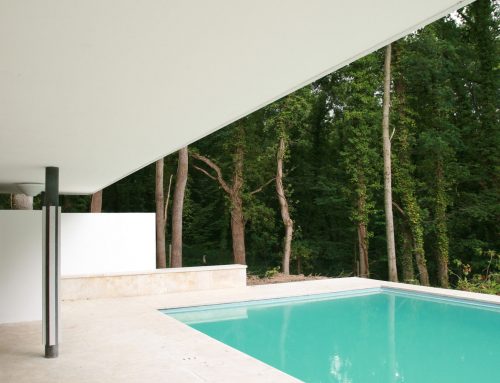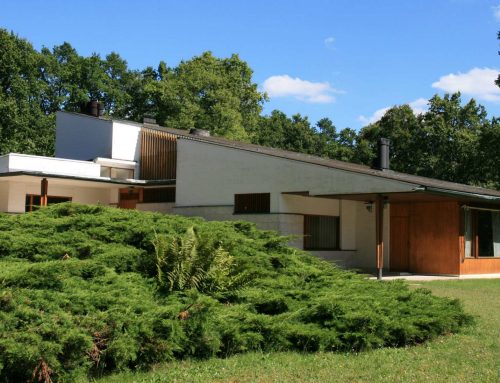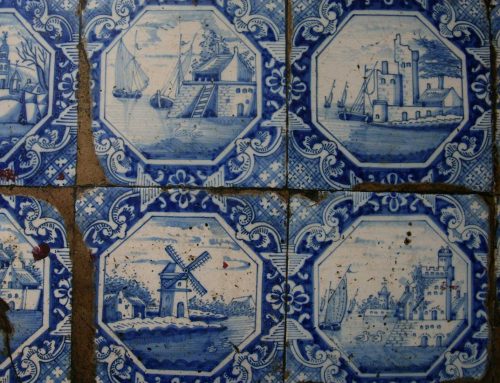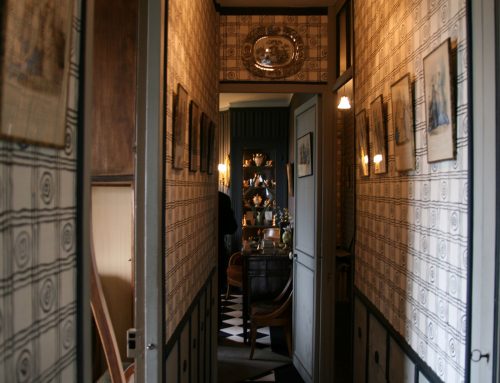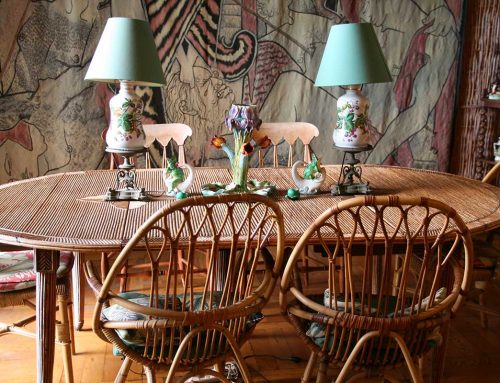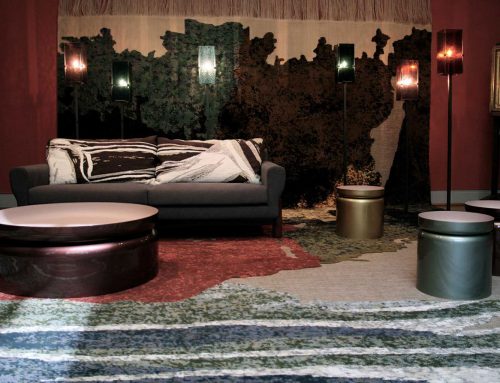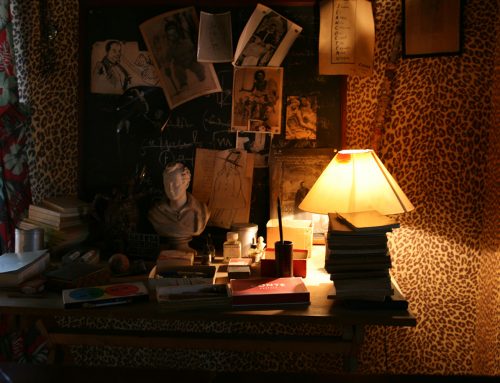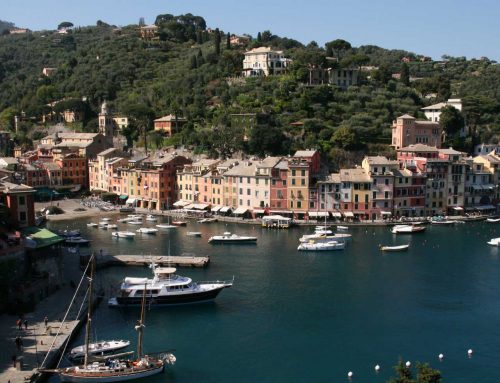The Victor Hugo Museum in Paris showcases a lesser-known aspect of Hugo’s artistic genius : his talent as a decorator. When Victor Hugo rented this 280 square metre apartment in the Hôtel de Rohan-Guéménée at 6, place Royale (now place des Vosges) in 1832, aged thirty, accompanied by his wife Adèle Foucher and four children, his novel “Notre-Dame de Paris” (The Hunchback of Notre-Dame) had already been published to great popular success.
Victor Hugo cared strongly about architecture and decoration. The protagonist of Notre-Dame de Paris is the Cathedral of Paris and one of the main themes running through the novel is the importance of preserving Paris’ architecture, which was frequently either destroyed, neglected or badly restored. This theme had already been the subject of an earlier article “Guerre aux démolisseurs!” (War to the Demolishers), which pleaded for the preservation of Paris’ medieval monuments. For Hugo, architecture is an indication of society’s ideals and values and like literature, enables the transmission of ideas. “Quiconque naissait poète se faisait architecte” (whoever is born a poet becomes an architect).
Victor Hugo was actively involved in decorating both his Paris apartment and, after his exile to Guernsey, his home Hauteville House. His decors are full of poetry, humour, symbols and references to his work and philosophy. In a letter to Jules Claretie, he said “J’ai manqué ma vocation, j’étais né pour être décorateur” (I missed my vocation, I was born to be a decorator). Later on, his eldest son Charles would describe his fathers interior decorating as “education of the mind in the form of a house”.
The Place des Vosges apartment underwent many changes after the departure of the Hugo family – the layout of the rooms being modified and most of the furniture dispersed. The rooms are now reconstructions of certain rooms of different houses decorated and occupied by Victor Hugo. However, the apartment exudes atmosphere, giving a very strong feel for Victor Hugo’s life and works.
The Antechamber

The antechamber still retains its original layout, limestone flooring and corner window and was furnished with wooden trunks aligned along the walls in the old-fashioned Spanish style.
The Red Reception Room

This room, hung with red damask and sumptously decorated with rugs, mirrors and Chinese porcelain, recalls the atmosphere of the Place Royale apartment during Victor Hugo’s sixteen years here, before Napoleon Bonaparte’s military coup and Hugo’s subsequent exile. In this room Victor Hugo would receive visits from Théophile Gautier, Alexandre Dumas, Charles-Augustin Sainte Beuve, Alphonse de Lamartine… On the walls are works of art that hung in the lounge originally : family portraits by Louis Boulanger and Auguste de Châtillon and a marble bust of the poet by David D’Angers.

The Chinese Lounge

Victor Hugo left Paris in 1851 for first Belgium, then Jersey. After being expelled from Jersey for supporting a local newspaper that criticised Queen Victoria, he settled in Guernsey. The success of his book Les Contemplations allowed him to purchase Hauteville House, where he remained until Napoleon III was forced from power following the French defeat in the Franco-Prussian war in 1870.
The Chinese decor of this room was designed for Hauteville Fairy, the Guernsey house of Victor Hugo’s mistress, Juliette Drouet. Hugo designed the Chinese-style panels in 1863-4 and close inspection reveals the initials VH and JD in several places.


The Medieval Dining Room

The dining room is based on the medieval-style dining room of Hauteville Fairy. In Guernsey, Hugo would search through local antique shops for old sea chests which he would have dismantled and reassembled in accordance with his designs.
The Bedroom

The red bedroom is a faithful recreation of the bedroom at 130 avenue d’Eylau, where Victor Hugo spent the last years of his life (1878 – 1885). It was in this bed that Victor Hugo died on 22nd May 1185. A painting on the walls depicts Hugo’s final moments in this room, the bed strewn with flowers.



